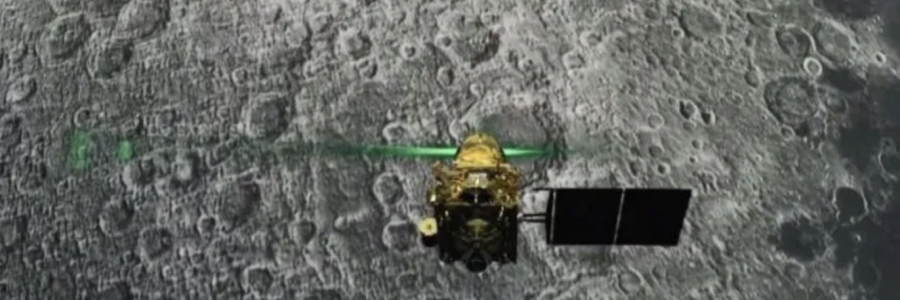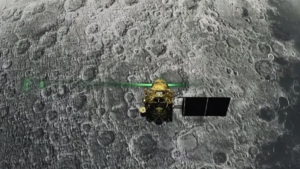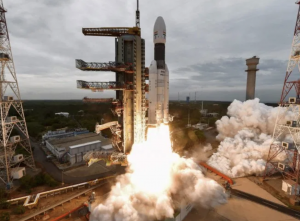
Vikram’s exact location found, seeking new communications with Chandrayaan-2


ISRO said on Saturday it had lost communication with its Vikram lander 1.2miles before touchdown on the moon’s south pole. The complex £114m mission involved carrying out a soft landing with a rover vehicle to search for signs of water.
India would have become only the fourth country to land a vessel on the lunar surface and the third behind Russia, The US and China to operate a robotic rover on it.
A live webcast by ISRO showing Vikram before it lost communications and supposed to land on the Moon.
It was not known whether the Vikram had landed or crashed and data is now being analysed to find out what happened.
The mission lifted off on July 22 from the Satish Dhawan space centre in Sriharikota an island off the coast of the southern state of Andhra Pradesh.
On September 2, Vikram separated from the mission’s orbiter and the lander began a series of braking manoeuvres to lower its orbit and ready itself for landing.
Chandrayann-2 would become world’s first spacecraft to land near the Moon’s South pole, the lunar surface area that remains in shadow is much larger than that at north pole and there’s a possibility of water presence in the premanently shadowed areas, and the craters here are cold traps and contain a fossil record of the early Solar System, where temperatures can go below 230 degree Celsius.
Mylswamy Annadurai, the director of India’s first Moon mission Chandrayaan-1, believes that obstacles on the Moon’s surface may be stopping the Vikram lander form receiving signals. “There is always a two-way communication between the orbiter and the lander, but we can attempt to communicate through one way.” Annadurai said and added that communication will not be for more than 5-10 minutes.
Exact location of the Vikram Lander, one of the three components of the Chandrayaan-2, has been found on the moon’s surface but no contact has been established yet, ISRO chief K Sivan said the orbiter has clicked a thermal image of the lander. “The place where lander alighted is expected to be not conducive enough for it to soft-land. There may be some obstacles, which could have been stopping us from establkishing the connection ” Annadurai said.
Chandrayan-2’s six-wheeled rover Pragyan rover will be deployed a few hours after the Vikram lander lands on the Moon and will conduct missions for 14 days.
Last January, China achieved the first landing on the far side of the moon.
In April, an Israeli spacecraft attempting to land crashed moments before touchdown.
